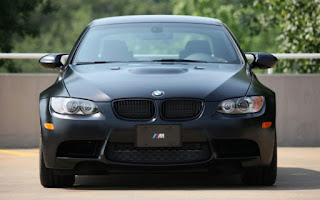Years ago, Hyundai was the new car of last resort — the cheapest new car you could buy. Hyundai has come a very long way since then, and the Genesis sedan is proof. It’s a high value, rear-wheel drive luxury sedan offering a choice of V6 or V8 power.
The Genesis seats five in a well-appointed cabin, featuring wood and aluminum trim, chrome accents, soft-touch materials and state-of-the-art technology. For example, while an iPod interface is standard, the voice-activated navigation system includes a multimedia interface that’s easier to use than what’s offered in most luxury cars, and there’s an optional 17-speaker audio system with 7.1 Surround Sound.
I originally drove this car when it was first introduced as a 2009 model, and was impressed then. This go around, driving the V8 version, impressed me even more.
Model Lineup: The 2011 Hyundai Genesis sedan is offered in two models — the Genesis 3.8 and 4.6. Both are named after the size of their powerplant.
The Genesis 3.8 stickers at $33,000 and comes standard with leather upholstery; leather-wrapped tilt/telescoping steering wheel with audio controls; dual-zone automatic climate control; cruise control; heated front seats; eight-way power-adjustable driver’s seat with lumbar adjustment; four-way power-adjustable passenger seat; heated power mirrors; power windows and door locks; remote keyless entry and starting; seven-speaker AM/FM/CD/MP3 stereo; iPod interface; XM Satellite Radio; auxiliary audio input jack; Bluetooth cell phone link; auto-dimming rearview mirror; compass; universal garage door opener; automatic headlights; theft-deterrent system; fog lights; and P225/55R17 tires on alloy wheels.
Options include a $2,500 Premium Package that adds premium leather upholstery; leather-wrapped dash and door trim; power tilt/telescoping steering wheel; memory for the driver’s seat, a sunroof; Lexicon 14-speaker audio system; six-disc CD changer; automatic windshield defogger; rain-sensing wipers; and a power rear sunshade.
The Premium Navigation Package ($2,000) adds P235/50R18 tires on alloy wheels with chrome inserts, 40-gigabyte hard drive navigation system, XM NavTraffic with a 90-day subscription, and rearview camera. The $5,500 Technology Package also comes with the larger wheels and tires; and includes front and rear park assist; Ultimate Navigation with hard drive; heated/cooled driver’s seat; 17-speaker Lexicon audio system with 7.1 Surround Sound, HD radio, rearview camera; smart cruise control; electronic parking brake, and adaptive, auto-leveling xenon headlights.
The Genesis 4.6 (our test vehicle) stickers at $43,000. There are no options. The 4.6 as it comes standard with all the standard and optional equipment from the 3.8, plus electro-hydraulic power steering, chrome bodyside moldings, illuminated door sill plates, woodgrain trim on the steering wheel, and auto-dimming outside mirrors.
Safety features on both include dual front airbags, front and rear side airbags, curtain side airbags, tire-pressure monitor, electronic active front head restraints, antilock brakes with brake assist and electronic brake-force distribution, traction control, and electronic stability control.
Walkaround: The Hyundai Genesis looks like someone sat down at the computer mixing and matching design elements from the Mercedes E-Class and BMW 5-Series. Styling isn’t really aggressive, but more pleasingly athletic. Except for a semi-discreet badge on the trunk, you wouldn’t know this was a Hyundai, and numerous people mistook it for a Mercedes.
The trapezoidal grille boasts a touch of Mercedes, flanked by modern eye-slit headlights. Fog lights are standard on the lower fascia, which also features a large lower air intake.
Overall, the car resembles the more angular shape of the BMW as opposed to the softer, rounder Mercedes design. The roofline mirrors the 5-Series, right down to the dogleg rear pillars.
The Genesis features a high trunk line and a lower fascia adorned with dual exhaust tips hinting at its sporty character.
Interior: The Genesis boasts a luxurious cabin, with soft-touch materials everywhere, including a leather-wrapped dash — something usually reserved for much more expensive vehicles — and chrome accents. The easy to read electroluminescent instrumentation features white numbers on a black background with blue accents.
The center stack includes a small screen at the top that displays radio and climate information, with radio controls at the bottom, and 10 buttons devoted to climate control. The CD slot sits below the center stack and below is a small cubby for CDs.
The front seats are comfortable and sit up high. Front and rear head and legroom are plentiful. The trunk is deep, with 16.0 cubic feet of cargo room.
Under The Hood: The standard 290-horse, 3.8-liter V6 puts out 264 pound-feet of torque. The Genesis 4.6 features Hyundai’s 4.6-liter Tau V8, which puts 385 ponies on the pavement (with premium gasoline; 378 with regular) and 333 pound-feet of torque (324 lb-ft with regular gas). Both engines are mated to 6-speed automatics with a manual shiftgate.
Behind The Wheel: Our test V8 delivered plenty of smooth power and offered pretty decent mileage (17/City—25/Highway) — especially for this performance level.
The Genesis benefits from rear-wheel drive architecture, a rigid structure, and advanced five-link front and rear suspensions — all hallmarks of great sports sedans. Although not quite as agile as some of its competitors, the Genesis is a legitimate sports sedan. On winding roads it handles well, with a generally nimble feel through corners. The V8 benefits from electrohydraulic steering that provides sure steering in the tightest corners.
The Genesis rides well, smoothing out most bumps, but can get bouncy over ruts and humps at highway speeds.
Whines: Tall rear passengers may have a complaint with headroom. While there’s a pass-through from the trunk, the rear seats don’t fold down.
Bottom Line: As luxury sports sedans go, the Hyundai Genesis is the real deal, and its price point makes it a very attractive alternative to the BMW 5-Series, Lexus GS, Mercedes E-Class, and Infiniti M. Both the V6 and V8 models deliver fine handling, a smooth ride, and more than adequate power. Although not an even-up match for the very best in its class, the Genesis is equally luxurious, surprisingly capable, and costs significantly less.

















